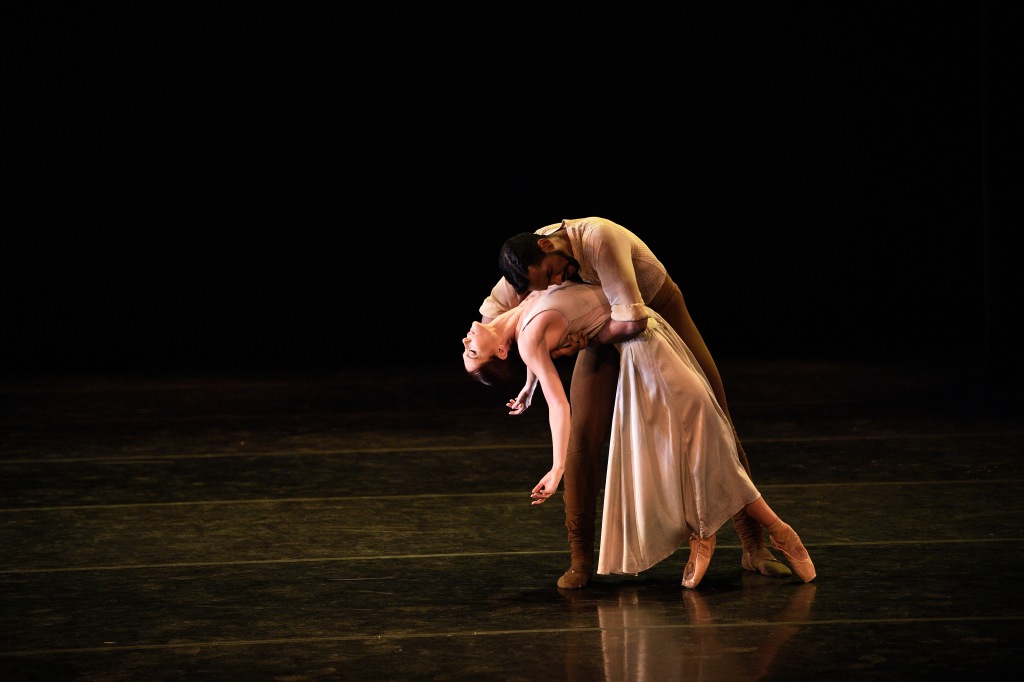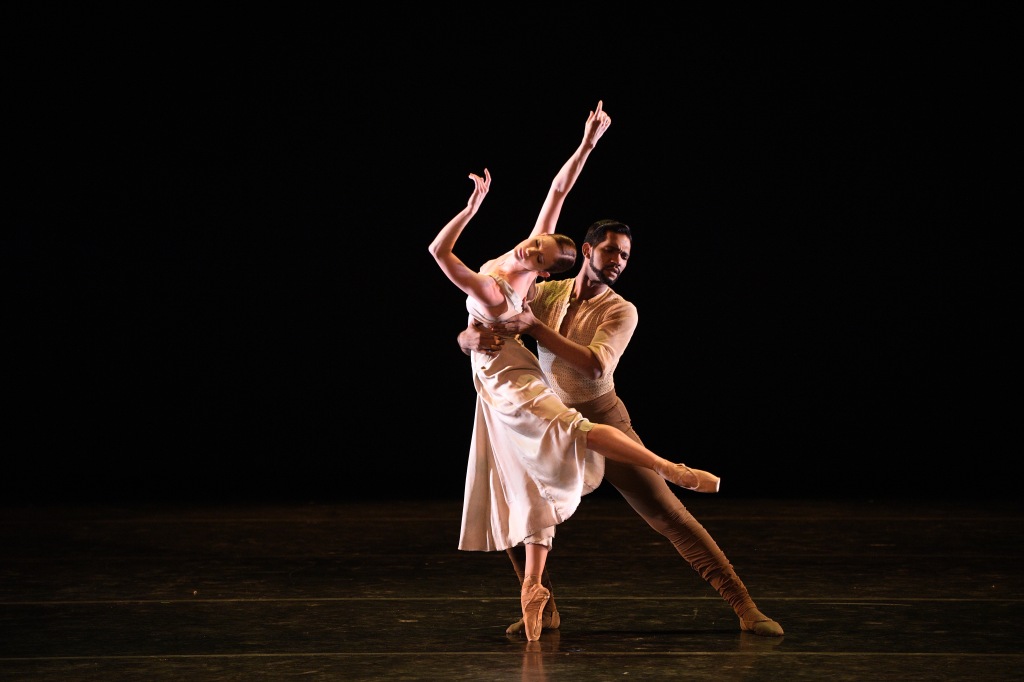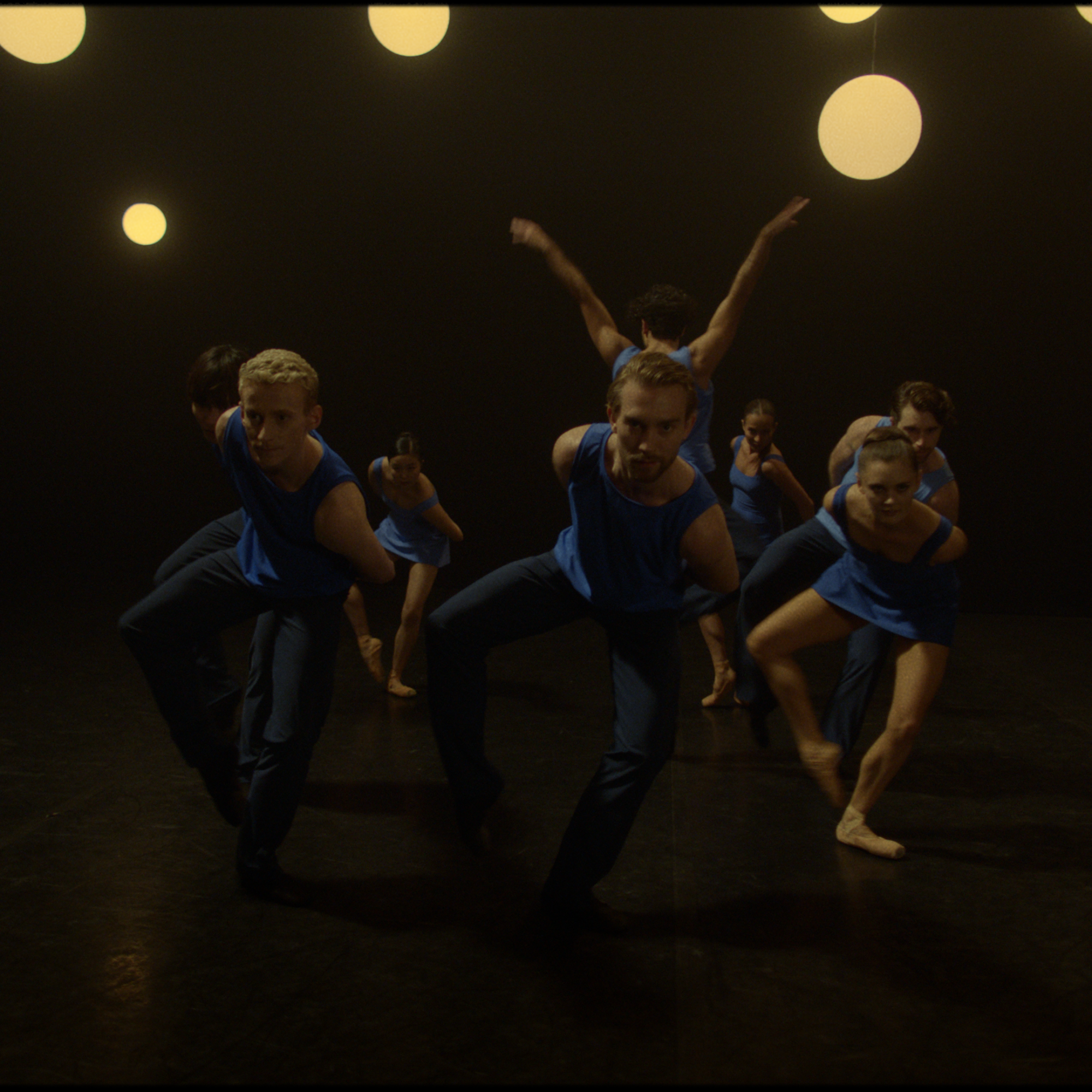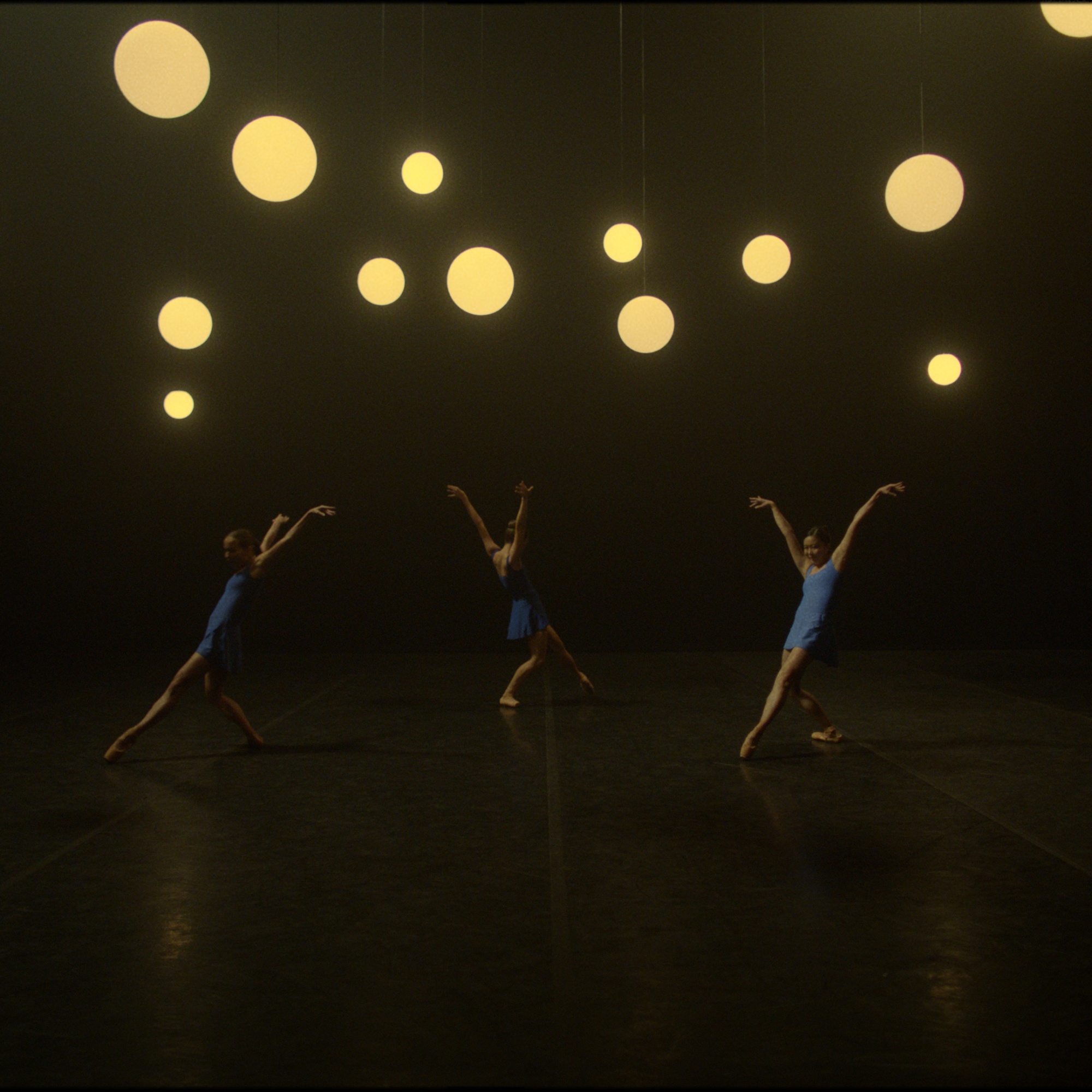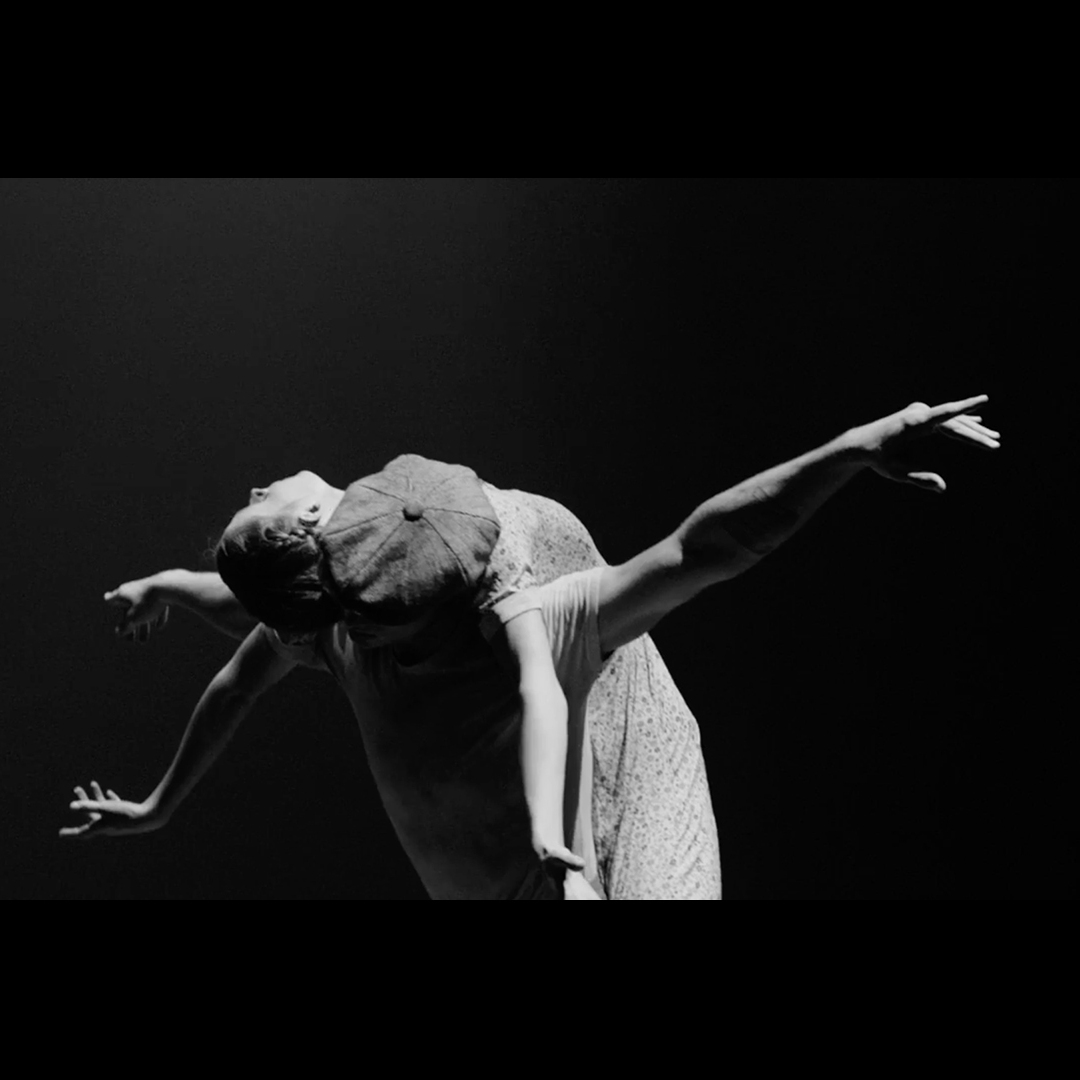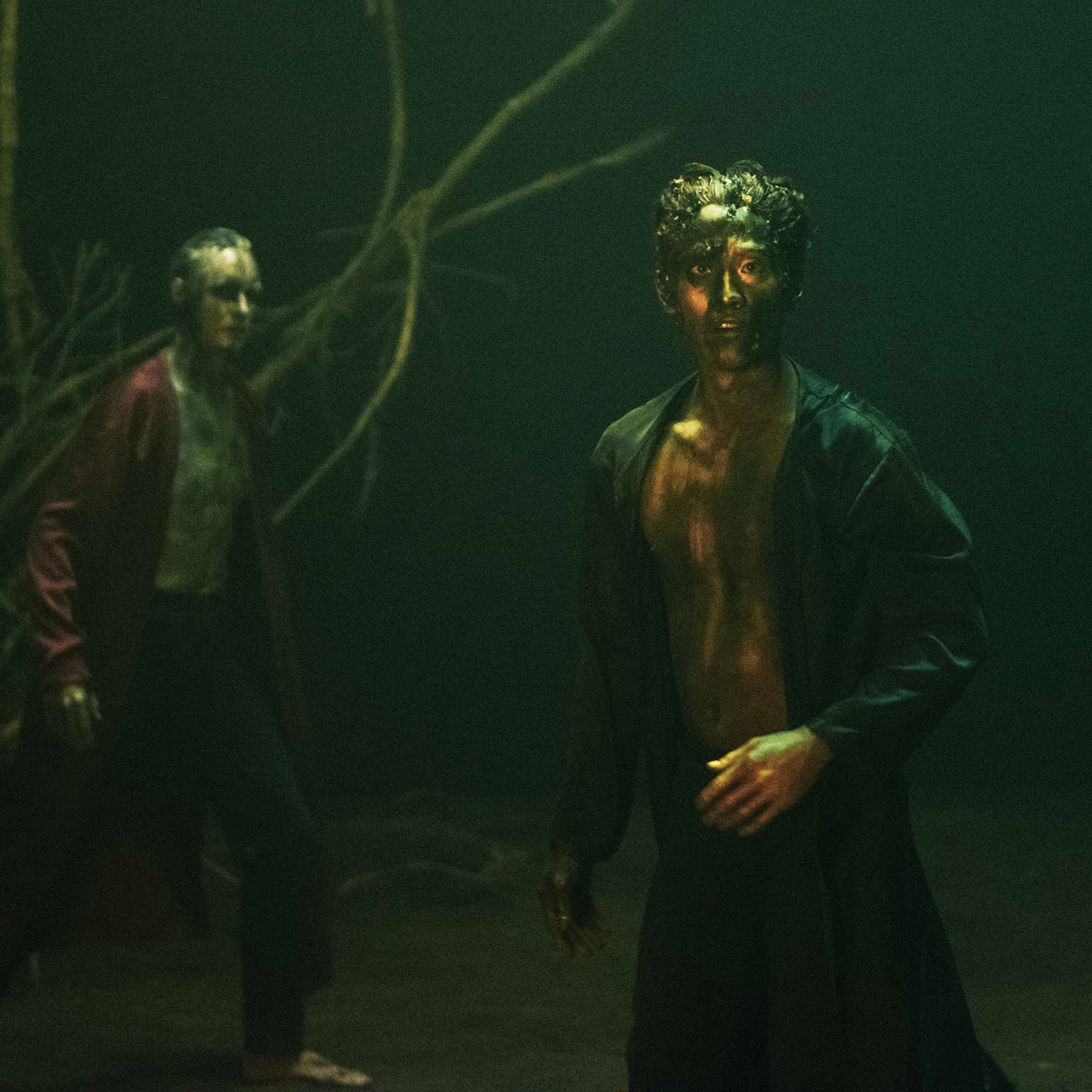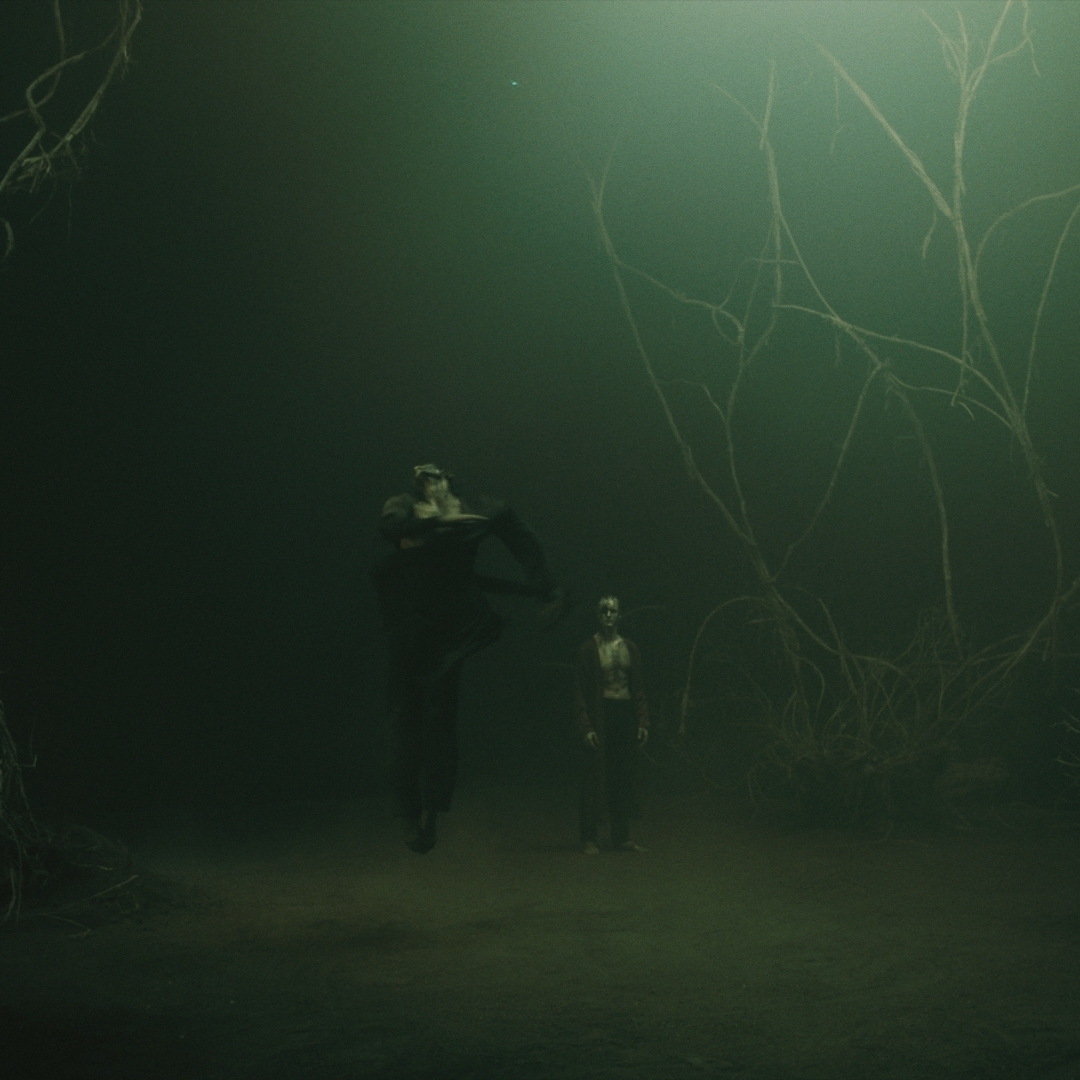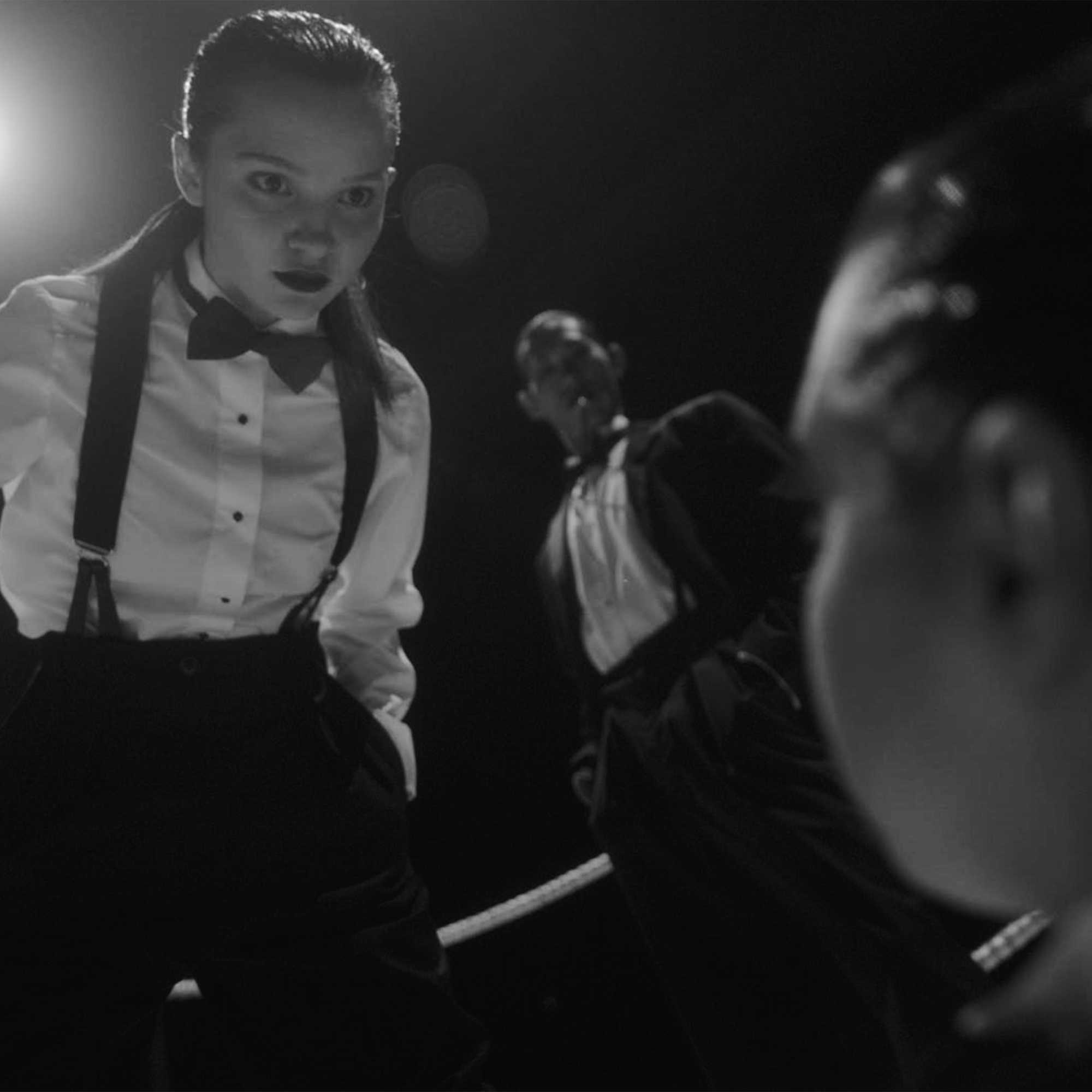Emerging Dancer: a celebration
This year’s Emerging Dancer was a bit different to the usual event, in that it was a celebration of the competition, performed by past winners of both the Emerging Dancer Award and the People’s Choice Award. The programme was diverse, spanning the Romantic era to new commissions, and produced by James Streeter, First Soloist of English National Ballet, as part of the Dance Leaders of the Future programme. Julia and Rosie watched it on English National Ballet’s YouTube channel.
For us it’s really important that Emerging Dancer continues to give opportunities to choreographers and dancers to work together on new pieces. Traditionally there’s been an emphasis on the stars of the future in terms of dancers, but it’s also great to see new choreographic works by lesser known and less experienced choreographers, who may become the choreographic stars of the future.
Rosie: In 2018 there was an amazing work by Mthuthuzeli November called Point of Collapse that he created for Precious Adams. I was transfixed by it. Then last year Stina Quagebeur made a duet titled Hollow for Emily Suzuki (who has fast become one of my favourite ENB dancers—elegant, classical and dramatic in equal measure) and Victor Prigent, which they went on to perform as part of the Solstice programme at the Festival Hall in June of this year. But it was also performed by Alison McWhinney and Junor Souza. I was disappointed that I didn’t see this additional cast as well as the original dancers.
Julia: I was particularly taken by Alison and Junor’s performance of Liam Scarlett’s No Man’s Land pas de deux. Both dancers’ connection was so profound yet so subtle: you could really see their connection through the movement being performed, for example, the way Junor’s arms created harmonic lines framing the elegant curves of Alison’s upper body.
Rosie: Sometimes you can really see how the choreographer uses the particular talents and personality of the dancer or dancers they use. I felt this keenly in the case of Mlindi Kulashe’s Self Tape that he made for Rhys Antoni Yeomans. Mlindi is with Northern Ballet, although he studied at ENB School, and we saw his Mamela… in 2018. That was about frustration and entrapment, but for Rhys he made a piece of a very different nature. Rhys won the People’s Award last year, and I can see exactly why: he has an ebullient stage presence and is able to perform a lot of virtuosic “tricks”, as if to the manner born.

Rhys Antoni Yeomans performs Self Tape as part of ENB’s Emerging Dancer – A Celebration photo: Laurent Liotardo
Julia: I found the first section of this solo very quirky and humorous, perhaps reflective of his character, as he dances with a camera on a tripod, as if working out where best to place it to record his “performance”. The second section was also quirky in its use of gesture and unusual rhythms, but in addition displayed Rhys’ technical facility with constant quick, unexpected changes of weight, and leaps and turns that seemed to appear from nowhere.
Rosie: A dancer who is very different to Rhys is Aitor Arrieta, another favourite of ours.
Julia: Yes, indeed! He always strikes me as a very elegant and refined dancer, ideal for the classics, and princely roles. He reminds me of James Streeter in the way he carries himself, and the style of the Grand pas classique that he danced with Julia Conway really highlighted these qualities of Aitor’s—as the title suggests, in fact.
Rosie: We went to see him in Christopher Wheeldon’s Cinderella in Southampton, remember? I found him tender in this role. He won Emerging Dancer jointly with Rina Kanehara in 2017 performing the Esmeralda pas de deux. But he also has a lot of dramatic potential: we saw this in Manon, didn’t we? And even more so in Akram Khan’s Giselle. That performance of Giselle was very special, because it was Crystal Costa’s final performance with the Company. I miss her—she was my number one Mistress in Manon.
Julia: Yes, she brought out a warmth in the character, as well as humour—she sometimes seemed a bit ditsy. Remembering this performance of Giselle makes me really excited to see Aitor in Akram Khan’s Creature at the start of next month.
Rosie: Another dancer I love as Lescaut’s Mistress in Manon is Rina. She has a natural radiance, but she is also very funny in that role.
Julia; Yes, I enjoyed watching her in this year’s new commission by Nikita Goile, dancing with Georgia Bould and Alice Bellini. You can really see her own interpretation of Goile’s choreography, and personal choices performing the movement material, like the individuality of the hand gestures close to her face.
Georgia Bould, Alice Bellini and Rina Kanehara perform Lilith’s voice in Emerging Dancer – A Celebration photo: Laurent Liotardo
Rosie: Yes, we saw a completely different side of her, which I’ve seen only in corps de ballet roles, such as Akram Khan’s Giselle. But here, in Goile’s Lilith’s Voice she was the central figure and showed a dramatic, even tragic, weight in her dancing, as well as an intensity of presence. This is another advantage of new choreographies—they can bring out unexpected qualities in dancers, thereby helping the dancer to develop, and helping us, the audience, to see the dancer in a different light and so not be tempted to typecast people in our minds.
Julia: Indeed – ENB dancers are incredibly fortunate to have such diverse experiences with the Company.
Rosie: I thought the evening came to a rip-roaring climax with Shiori Kase and Dani McCormick in Flames of Paris. One of the things I really enjoyed about watching this celebration was seeing some of the same pieces with different dancers.
Julia: In 2019 we saw Flames of Paris with Julia Conway and Rentaro Nakaaki. That was the last competition before the pandemic, and the performance was a clear winner for us. I was so excited for Julia when she won. I think we have said this before—she has always worked in a focussed way and seems so eager to continue to develop her skills, using her personal talent and aiming to achieve her full potential. But did you know that it was Shiori who coached Julia in 2019?
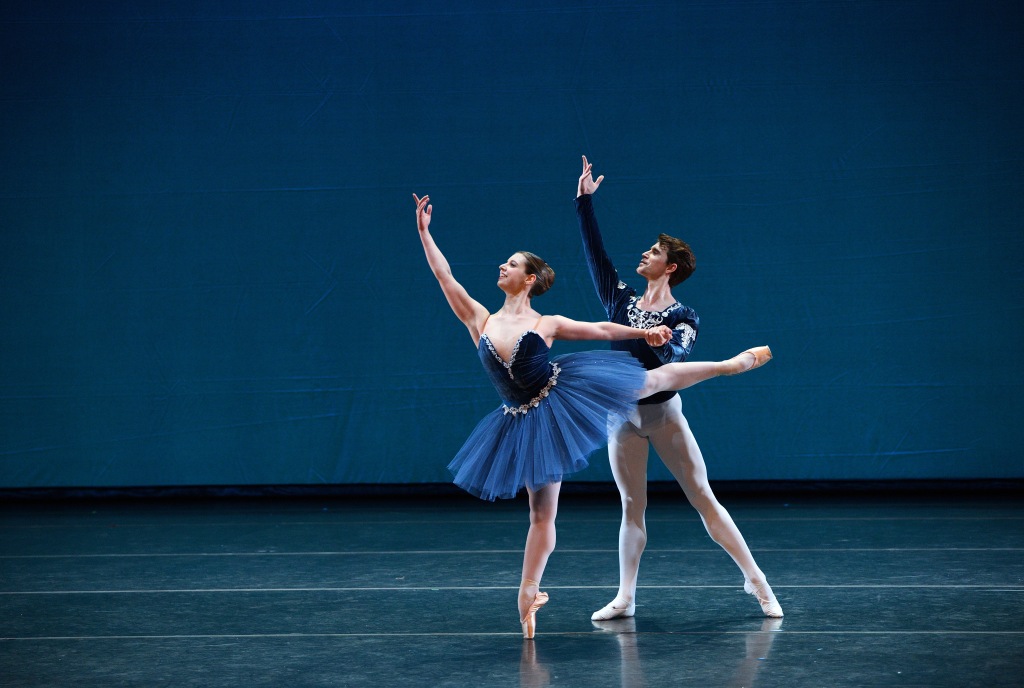
Rosie: No, I did not! That’s so interesting. I would love to see Julia as Aurora—she emits a sense of composure in the face of technical challenges that would suit the role, I think … This was abundantly clear in that fiendish diagonal of rélevés with développés and turns in her solo variation from Grand pas classique. But Shiori won the Emerging Dancer Award in 2011, the second year of the competition, and she has since shown herself to be a beautiful classical ballerina, most recently in Solstice, in which she danced both the Coppélia and Le Corsaire pas de trois; I mean, her technical assurance in Flames of Paris was just captivating. Here she also showed a cheekiness in her dancing. And I loved her fouettés with changing port de bras from fourth position to fourth position with the other arm. I found out from her Instagram that she and Dani (whose full name is Daniel Alejandro McCormick-Quintero) participated in the US International Ballet Competition in 2014, when she won the Gold Medal. One of the joyful things about this performance was Dani’s full adoption of the role of Philippe, as well as his full engagement with all the technical and stylistic challenges of the role—and let’s face it, there are plenty. In this he reminds me of Jeffrey Cirio; I can’t really give any higher accolade.

Julia: Indeed – it was a great performance from Dani! I particularly liked Ivana Bueno and Victor Prigent’s partnership in the extract from La Sylphide. Ivana’s phrasing was incredible; her épaulement was to perfection and the way in which she combined Bournonville’s small movements with more expansive turns and jumps was beautiful to watch.
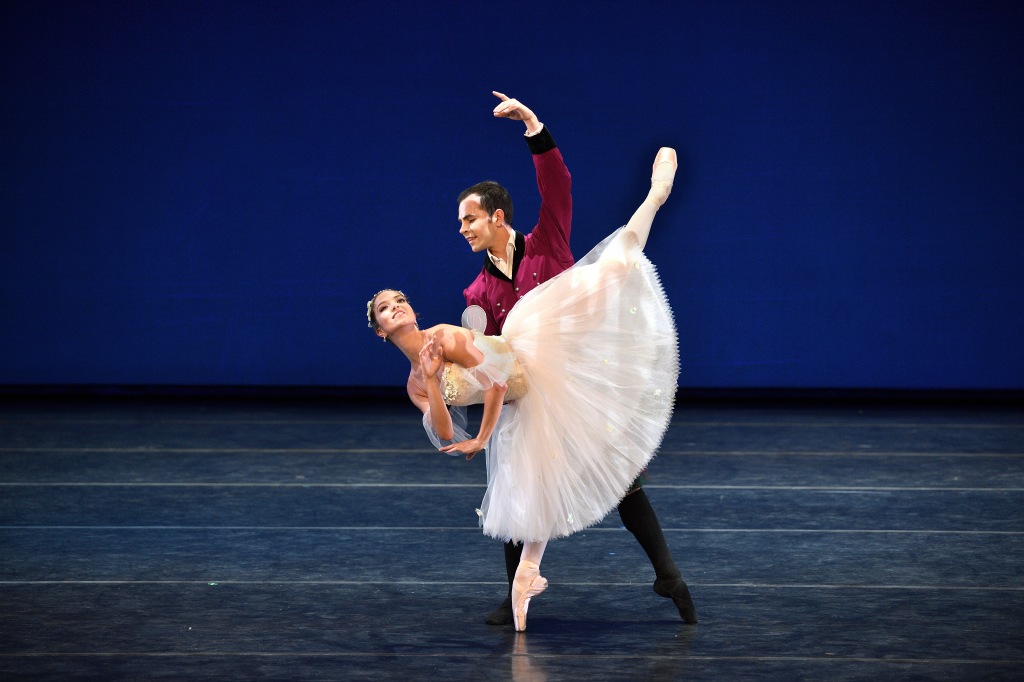
Rosie: I always think that Bournonville choreography is deceptively simple. Our students tend to think that Bournonville’s ballets are much easier to perform that the Petipa classics like Sleeping Beauty and Swan Lake. I was impressed by Victor’s articulation of all that intricate batterie, which is so challenging. I also felt that he and Ivana portrayed a wonderful sense of the human and supernatural worlds and their attraction for one another.
Julia: And finally, it was great seeing James Streeter at the end of the performance cheering his colleagues for their brilliant work and dedication toward this year’s performance. He made particular mention of the mentors, who are all dancers in the Company. For me, this shows that despite the challenges the Company faced during the pandemic, ENB dancers continue to find ways of developing their careers and exploring new skills.
© British Ballet Now & Then
